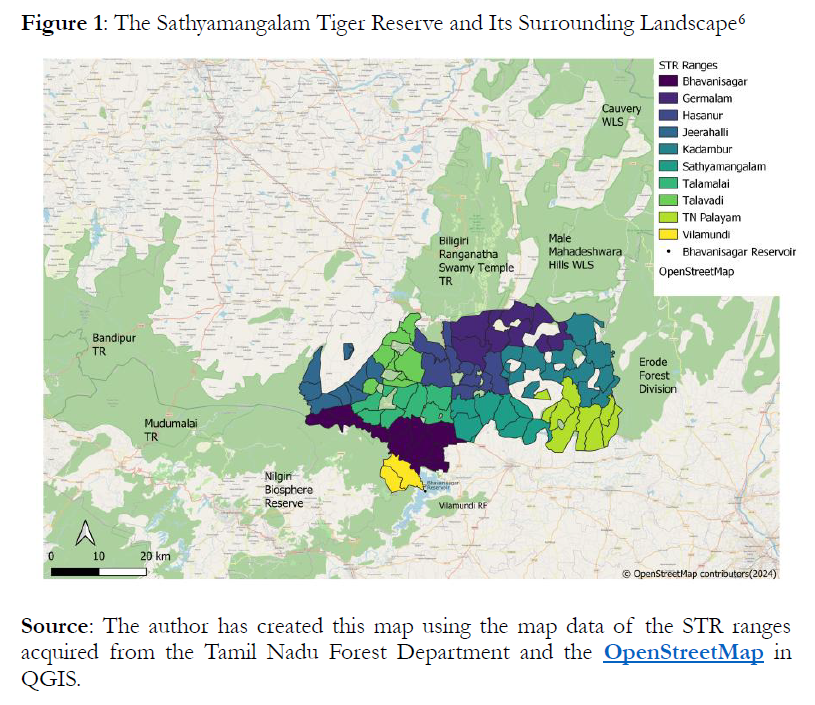De jure and De facto Land Management Approaches of Forest Officials
Reflections from the Field and Archives
DOI:
https://doi.org/10.37773/ees.v8i1.1455Keywords:
Land Management , Field , Archives, Forest OfficialsDownloads
References
Chakravorty, Sanjoy. 2013. The Price of Land: Acquisition, Conflict, Consequence, 1st ed. New Delhi: Oxford University Press. https://doi.org/10.1093/acprof:oso/9780198089544.001.0001
DeFries, Ruth, Krithi K. Karanth, and Sajid Pareeth. 2010. “Interactions between Protected Areas and Their Surroundings in Human-Dominated Tropical Landscapes.” Biological Conservation 143 (12): 2870-80. https://doi.org/10.1016/j.biocon.2010.02.010
ET Bureau. 2014. “Ministry of Environment and Forests Undergoes a Nomenclature Change: Government Serious to Tackle Climate Change.” Economic Times, May 28, 2014. https://economictimes.indiatimes.com/news/economy/policy/ministry-of-environment-and-forests-undergoes-a-nomenclature-change-government-serious-to-tackle-climate-change/articleshow/35651292.cms?from=mdr
Fleischman, Forrest. 2016. “Understanding India's Forest Bureaucracy: A Review.” Regional Environmental Change 16 (2016): 153-165. https://doi.org/10.1007/s10113-015-0844-8
Gutierrez Garzon, Alba Rocio, Pete Bettinger, Jesse Abrams, Jacek P. Siry, and Bin Mei. 2022. “Forest Sustainability in State Forest Management Plans: A Content Analysis.” Journal of Sustainable Forestry 41 (1): 92-113. https://doi.org/10.1080/10549811.2021.1884575
Harper, Douglas. 2002. “Talking about Pictures: A Case for Photo Elicitation.” Visual Studies 17 (1): 13-26. https://doi.org/10.1080/14725860220137345
Hiremath, Ankila, and Bharath Sundaram. 2013. “Invasive Plant Species in Indian Protected Areas: Conserving Biodiversity in Cultural Landscapes.” In Plant Invasions in Protected Areas: Patterns, Problems and Challenges, edited by Llewellyn Foxcroft, Petr Pyšek, David Richardson, and Piero Genovesi. Vol. 7. Dordrecht: Springer. https://doi.org/10.1007/978-94-007-7750-7
MoEFCC. 2017. Voluntary Peer-Review under the Convention on Biological Diversity. Case Study 2: India. New Delhi: Ministry of Environment, Forest and Climate Change. https://www.cbd.int/doc/nbsap/in-vpr-en.pdf.
OpenStreetMap. 2024. Map data licensed under the Open Data Commons Open Database License. https://www.openstreetmap.org/copyright
TNFD. n.d. Tiger Conservation Plan, Sathyamangalam Tiger Reserve. Erode, Tamil Nadu: Tamil Nadu Forest Department. https://www.forests.tn.gov.in/wildlife-management-plan
___. 2010. Management Plan for Sathyamangalam Wildlife Sanctuary (2010-2020). Erode, Tamil Nadu: Tamil Nadu Forest Department. https://www.academia.edu/8273064/TAMILNADU_FOREST_DEPARTMENT_MANAGEMENT_PLAN_FOR_SATHYAMANGALAM_WILDLIFE_SANCTUARY_2010_TO_2020_
Tremblay, Marc-Adélard. 1957. “The Key Informant Technique: A Nonethnographic Application.” American Anthropologist 59 (4): 688-701. https://doi.org/10.1525/aa.1957.59.4.02a00100
Vasan, Sudha. 2002. “Ethnography of the Forest Guard: Contrasting Discourses, Conflicting Roles and Policy Implementation.” Economic and Political Weekly 37 (40): 4125–33.

Additional Files
Published
How to Cite
Issue
Section
License
Copyright (c) 2025 Nita Shashidharan

This work is licensed under a Creative Commons Attribution-NonCommercial 4.0 International License.
Copyright
The author(s) retain copyright on work published by INSEE unless specified otherwise.
Licensing and publishing rights
Author(s) of work published by INSEE are required to transfer non-exclusive publishing right to INSEE of the definitive work in any format, language and medium, for any lawful purpose.
Authors who publish in Ecology, Economy and Society will release their articles under the Creative Commons Attribution NonCommercial 4.0 International (CC BY-NC 4.0) license. This license allows anyone to copy and distribute the article for non-commercial purposes provided that appropriate attribution is given.
For details of the rights that the authors grant users of their work, see the "human-readable summary" of the license, with a link to the full license. (Note that "you" refers to a user, not an author, in the summary.)
The authors retain the non-exclusive right to do anything they wish with the published article(s), provided attribution is given to the Ecology, Economy and Society—the INSEE Journal with details of the original publication, as set out in the official citation of the article published in the journal. The retained right specifically includes the right to post the article on the authors’ or their institution’s websites or in institutional repositories.
In case of re-publishing a previously published work, author may note that earlier publication may have taken place a license different from Creative Commons. In all such cases of re-publishing, we advise the authors to consult the applicable licence at article level.







 Ecology, Ecoomy and Society--the INSEE Journal is a society run diamond Open Access and Scopus indexed journal.
Ecology, Ecoomy and Society--the INSEE Journal is a society run diamond Open Access and Scopus indexed journal.